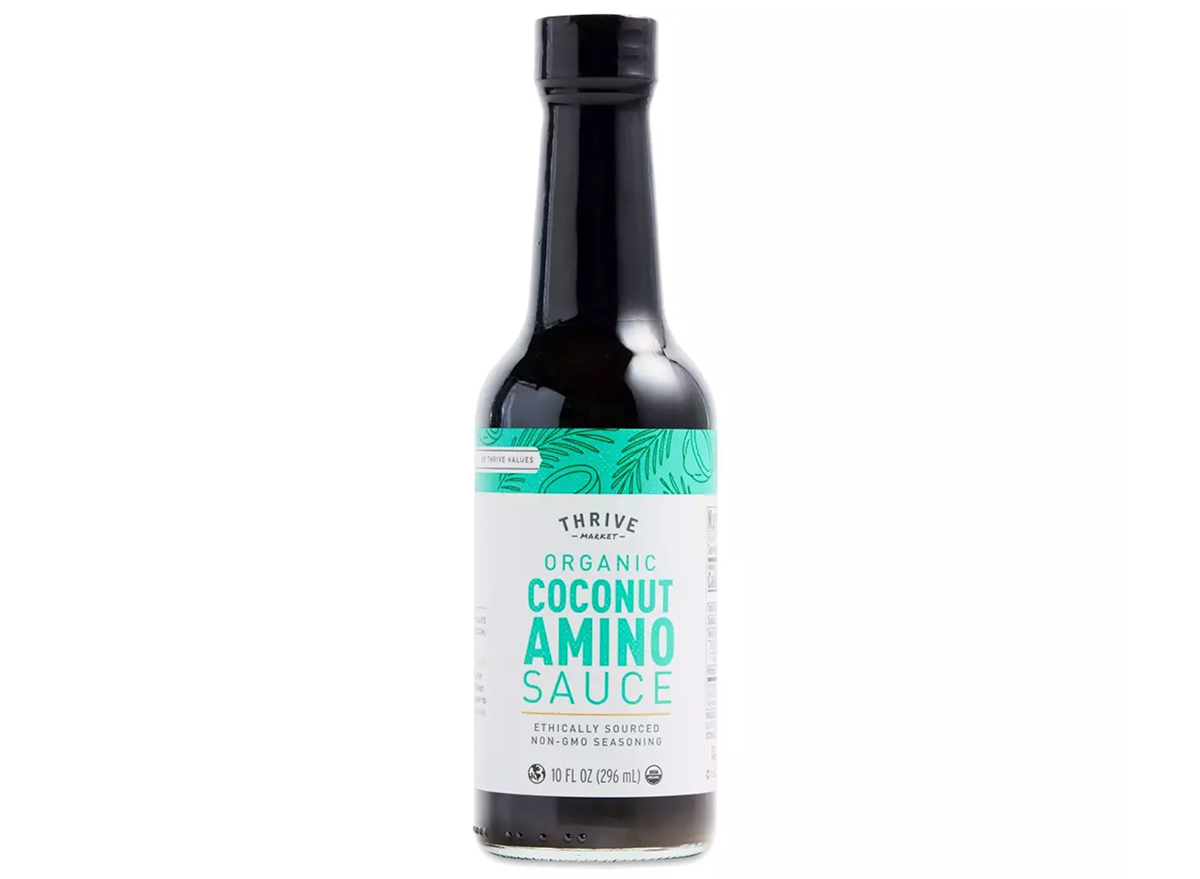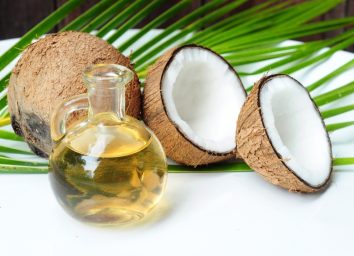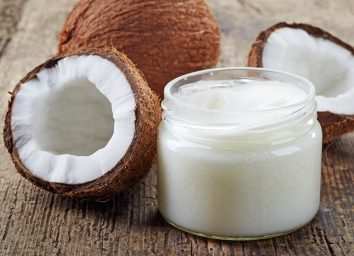Is Coconut Liquid Aminos a Healthy Soy Sauce Substitute?
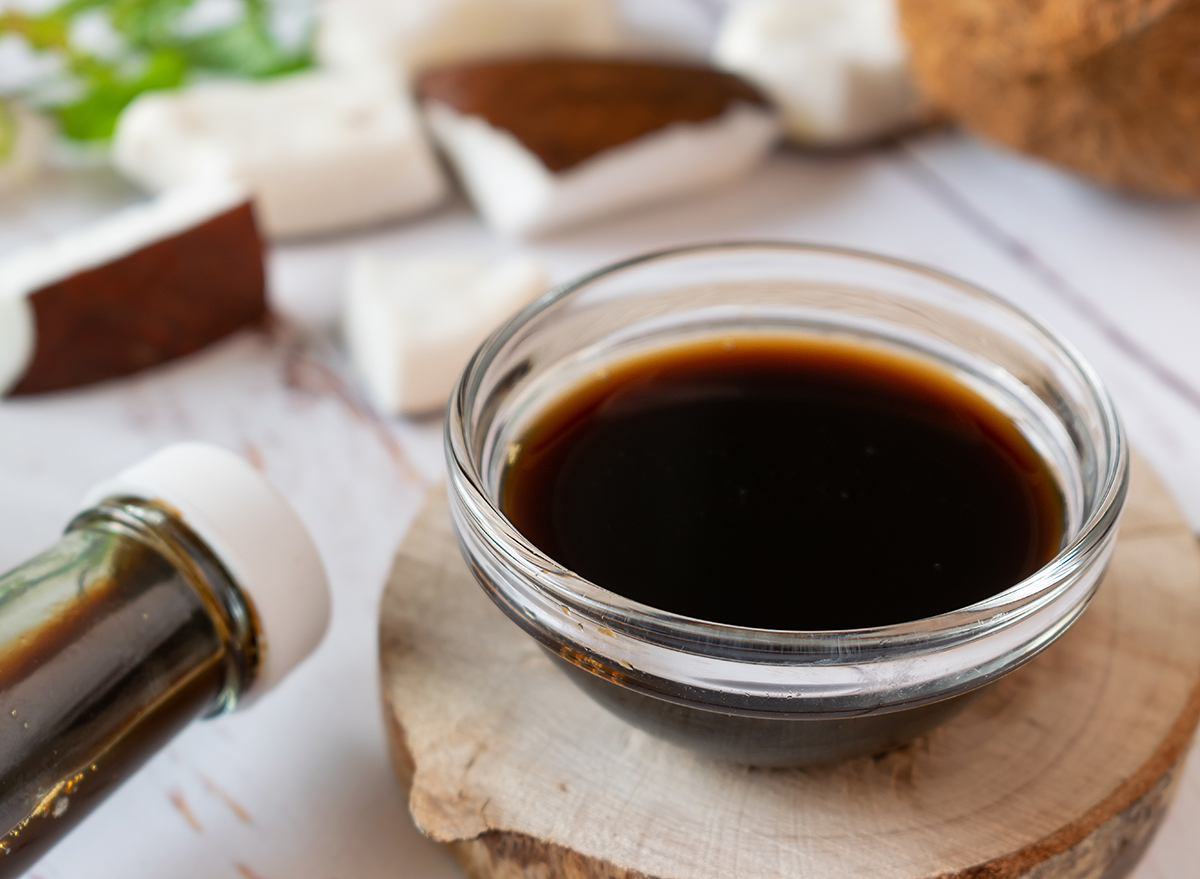
You'd think not much could stand up to the taste of soy sauce. The condiment is popular for its rich, salty taste that enhances even the simplest meals (hello stir-fry and sushi). Most of us would agree that it's tough to pass up. But, knowing a tablespoon of traditional soy sauce contains nearly 50 percent of our day's sodium intake is not something to take lightly if you're watching your sodium intake. Instead, you can opt for a tasty low-sodium alternative that rivals the flavor we love: coconut liquid aminos.
Liquid aminos, also known as coconut aminos or coconut liquid aminos, is a new product that has been touted as a healthy, lower-sodium soy sauce alternative that still packs flavor. It's gained popularity among people on the Paleo and Whole30 diets who may have more dietary restrictions. But anyone can use it. Here's everything you need to know before buying a bottle of liquid aminos.
What is coconut liquid aminos?
Liquid aminos or coconut aminos is a bottled liquid made from the sap of coconut blossoms and sea salt.
"Coconut aminos is a gluten-free and soy-free soy sauce substitute that's made from the (fermented) sap of coconut and salt," Chelsey Amer, MS, RDN, CDN, owner of Chelsey Amer Nutrition and author of Thrive in 5.
Liquid aminos vs. soy sauce
Both liquid aminos and soy sauce are fermented products: liquid aminos from fermented coconut sap and soy sauce from fermented soybeans. Both products have salt added, but as noted, coconut aminos is gaining popularity for its lightened up sodium load compared to soy sauce.
One tablespoon of soy sauce has between 960 and 1,030 milligrams of sodium. Low sodium soy sauce isn't even much better—it hovers around 575 milligrams of sodium per tablespoon. Compare that to one tablespoon of coconut aminos, which has just 270 milligrams sodium and you'll have a better sense of just how much sodium you save by switching to liquid aminos.
The American Heart Association recommends consuming no more than 1,500 milligrams of sodium per day, which means just two tablespoons of your average soy sauce can send you well above your daily max.
What does coconut aminos taste like?
Despite its name, coconut liquid aminos tastes nothing like coconuts. And unlike soy sauce, coconut aminos has a nice sweetness to it, so think of it as closer to teriyaki sauce than a savory soy sauce.
"Coconut aminos has a delicious umami flavor, and is slightly sweeter than soy sauce, but not as salty," says Amer. "It surprisingly doesn't taste like coconut, but has a similar taste to soy sauce, making it a great substitute."
What are the health benefits of coconut aminos?
"Coconut aminos are a great allergy-friendly soy sauce substitute," says Amer. "It's also lower sodium, which is beneficial for salt-sensitive individuals."
What dietary boxes do liquid aminos check off?
- soy-free
- gluten-free
- low-sodium
- Paleo-friendly
- Whole30-friendly
- Keto-friendly
As for specific health benefits, coconut aminos has been noted for its amino acid content, which are the building blocks for protein, and that it possibly lowers the risk of heart disease, diabetes, and colon cancer. However, there are zero studies that exist to back up anything.
"There are some health claims attributed to coconut aminos; however, we need more research to confirm these," says Vandana Sheth, RDN, CDE, FAND, Los Angeles-based registered dietitian nutritionist and author of My Indian Table: Quick & Tasty Vegetarian Recipes.
And when it comes to any negatives, if you have a coconut allergy, you should skip coconut aminos. And if you're watching your sodium intake, you should also be cautious.
"Just because it is lower in sodium does not mean that it is salt-free. Monitoring your portions will help keep the sodium content appropriate," says Sheth.
How can you use coconut aminos in cooking?
You'll find that using coconut aminos is easy, and it can be substituted for soy sauce in a one-to-one ratio.
"Nearly any recipes that call for soy sauce can use coconut aminos," says Amer. "Specifically, Asian-inspired recipes that call for soy sauce are perfect for cooking with coconut aminos."
Ideas for how to cook with liquid aminos:
- fried rice
- stir-fries (like this Sheet Pan Tofu Stir Fry recipe)
- salad dressing (try it on this Asian-Inspired Cobb Salad or Nut-Free Cold Noodles)
- chicken marinades
However, since coconut aminos doesn't taste exactly like soy sauce, you'll need to keep that in mind and taste to preference. "You can use it as a substitute in recipes that use soy sauce, however you will need to play around with the amount and taste as it is slightly sweeter," says Sheth.
Where can you buy coconut aminos?
You can find liquid aminos at most large retailers like Target, Trader Joe's (they have their own brand), Whole Foods, and Walmart. But while you might be able to find a bottle at your local grocery store, you're more likely to find it as a specialty health food store or online.
The following are some of our favorite coconut liquid aminos brands.
Coconut Secret Organic Coconut Aminos
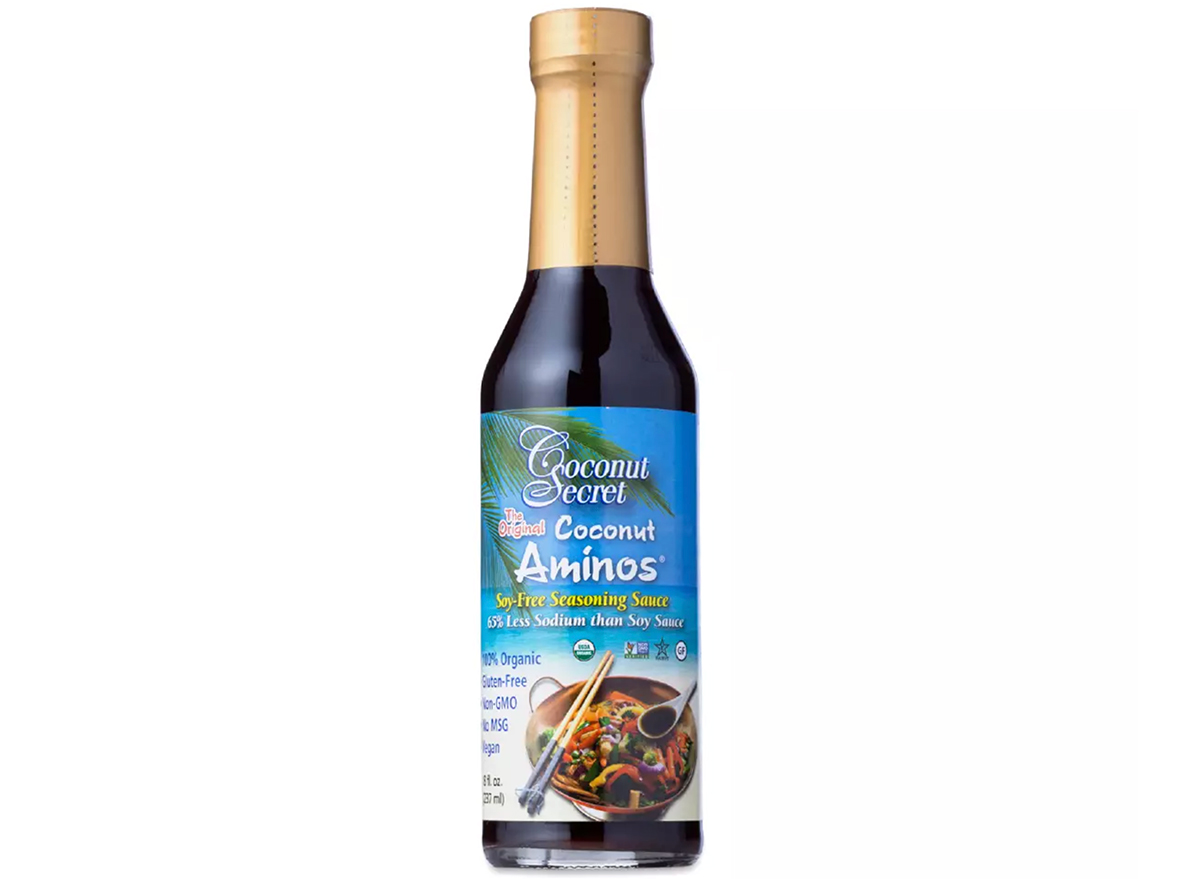
Bragg Organic Coconut Liquid Aminos
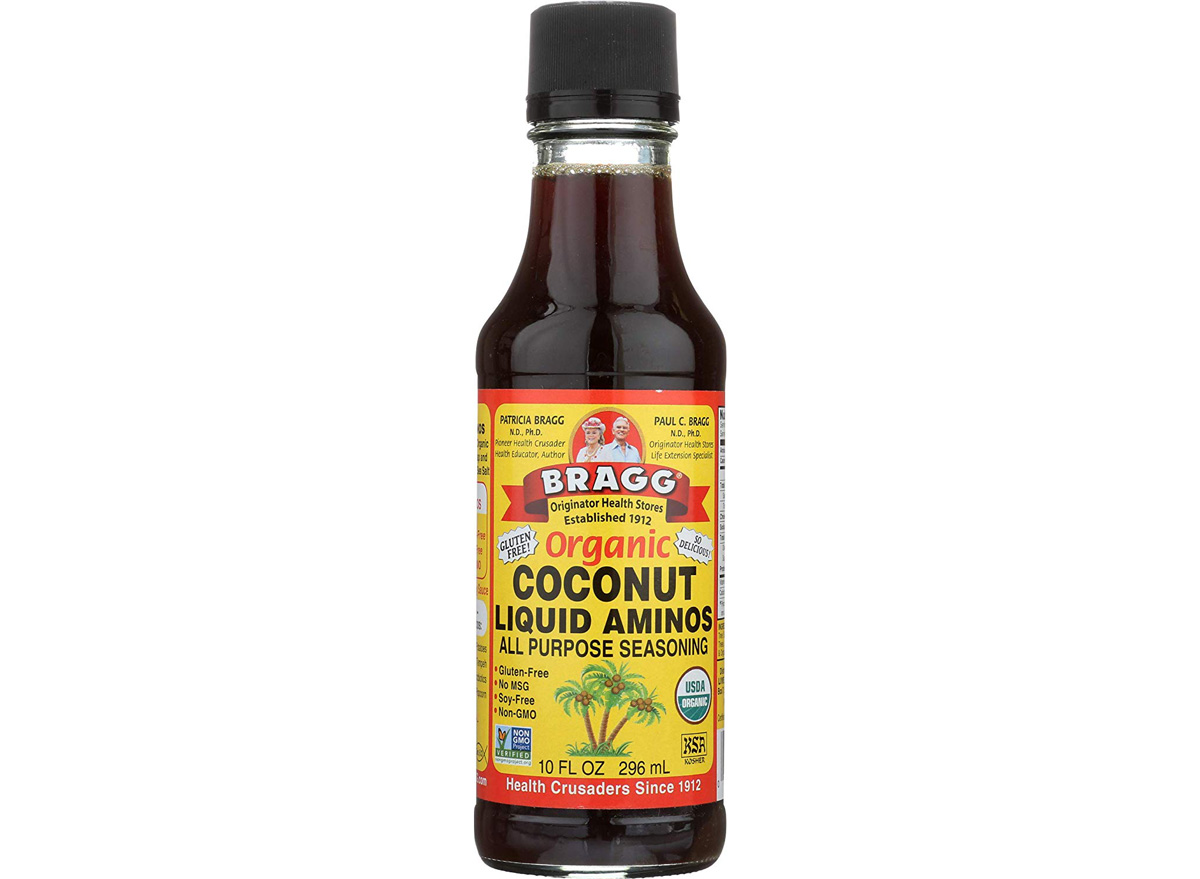
Thrive Market Organic Coconut Amino Sauce
